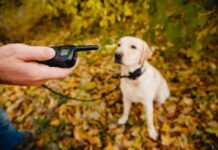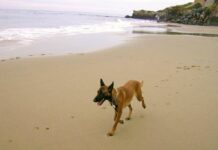Today, we explore whether a flat or rolled collar is better for our beloved canine companions. We all want what is best for our furry friends, so it’s crucial to understand the differences and benefits of each type of collar.
By exploring the various factors, from comfort and safety to training effectiveness, we aim to guide you in making an informed decision that will keep your dog happy, healthy, and stylishly accessorized. So, let’s embark on this collar conundrum together and unravel the mystery behind what truly suits our four-legged friends.
This image is the property of genuinecanine.com.
Comfort
Material
When choosing a collar for our furry friends, the comfort factor is paramount. After all, we want our dogs to feel good and comfortable wearing their collars. When considering the material for a collar, opting for soft and gentle fabrics that won’t irritate the skin is essential. Look for collars made from materials like nylon or leather, as they tend to be comfortable for dogs to wear for long periods. These materials are also durable and can withstand the wear and tear of everyday use.
Fit
Ensuring a proper fit is crucial for maximizing comfort. A collar should be snug enough that it won’t slip off but loose enough that your dog can comfortably move its head and neck. Measure your dog’s neck circumference accurately before purchasing a collar. Adjustable collars are a great option, allowing you to customize the fit to your dog’s needs. Remember to regularly check and adjust the collar’s fit as your dog grows or if they gain or lose weight.
Safety
Choking Hazard
The safety of our beloved pets is a top priority, so we must consider the risks associated with collars. One potential hazard is the risk of choking. Avoid collars with excessive width or adornments that could entangle or pose a choking hazard to your dog. Opting for collars with a proportionate width to your dog’s neck size is advisable to minimize this risk.
Neck Injury Risk
Specific collars, such as choke or prong collars, can pose a higher risk of neck injuries. These collars rely on discomfort to correct behavior and can lead to severe injuries if misused. Instead, choose collars that distribute pressure evenly across the neck, such as flat or rolled collars. These collars provide support while minimizing the risk of neck injuries.
Escape Risk
Some dogs are master escape artists, always finding a way out of their collars. Consider collars with added safety features like a quick-release buckle to prevent your furry friend from slipping away. These buckles allow easy removal if your dog gets caught on something and needs to break free. Additionally, regularly check your dog’s collar for any signs of wear or fraying that could compromise its strength and increase the risk of escape.
Training
Control
Collars play a vital role in training our dogs and maintaining control. For practical training, choosing a collar that gives you control without causing discomfort or harm is essential. Look for collars with adjustable features, such as multiple D-ring attachment points, that allow you to control the distance between you and your dog during training sessions.
Leash Attachment
Proper leash attachment is crucial when it comes to training and walking. Collars with sturdy metal D-rings provide a secure attachment point for the leash, reducing the risk of accidental detachment. Avoid collars with weak or flimsy attachment points, as they may break or come loose, potentially leading to a lost pet situation.
Training Purposes
Specific training techniques, such as positive reinforcement, require specific collar features. Consider collars with built-in clickers or attachment points for remote training devices for training purposes. These features allow effective communication and training while keeping your furry friend comfortable and safe.
Breed Considerations
Flat Collar Preferences
Different breeds have varying needs when it comes to collars. Flat collars are generally preferred for dogs with short coats or delicate necks. Flat collars distribute pressure evenly and prevent the tangling or matting of the fur. They are also suitable for dogs who have completed training and no longer require leash control during walks.
Rolled Collar Preferences
Certain breeds, such as sighthounds or dogs with longer fur, benefit from rolled collars. Rolled collars are designed to prevent hair breakage and matting. The smooth design reduces friction against the fur, making it a comfortable choice for our furry friends. Rolled collars also offer a classic and stylish look for fashion-forward dogs.
This image is the property of images.squarespace-cdn.com.
Visibility
Reflective Features
Visibility is crucial for keeping our dogs safe, especially during low-light conditions or at night. Collars with reflective features, such as reflective stitching or reflective strips, enhance visibility and make it easier for others to spot your dog. This added visibility can help prevent accidents and ensure the safety of your furry friend.
Color Options
Colors can also play a role in increasing visibility. Opt for collars in bright and vibrant colors, as they stand out against different backdrops. Avoid colors that blend too much with your dog’s fur or the surroundings, as this may make it difficult for others to notice your dog. Choosing the right color can enhance your dog’s visibility and keep them safe.
Durability
Material Quality
Durability is an essential factor when selecting a collar for your canine companion. Look for collars made from high-quality materials that can withstand everyday wear and tear. Materials like nylon and leather are known for their strength and can withstand various environmental conditions, ensuring a long-lasting collar.
Stitching
The stitching of a collar is a critical component of its durability. Choose collars with reinforced stitching to ensure they can handle the strain of everyday use. Double-stitched collars provide additional strength and longevity, preventing them from coming apart quickly. This attention to stitching detail will contribute to a collar’s overall durability.
This image is the property of auburndirect.com.
Grooming
Fur Matting
Collars that rub against a dog’s neck can cause fur matting, leading to discomfort and potential skin issues. Regular brushing can help prevent matting, but choosing a collar that minimizes friction against the fur is equally essential. Flat collars sit smoothly against the neck, reducing the risk of fur matting. For dogs with longer fur, rolled collars are preferred as they help prevent tangles and matting.
Chafing
Collars that don’t fit properly or have rough edges can cause chafing, leading to discomfort and even skin irritation. To prevent chafing, choose collars that are the correct size for your dog and have smooth edges. Additionally, regularly check for any signs of wear or damage contributing to chafing and replace the collar if needed.
Maintaining Hygiene
Proper collar hygiene is essential to keep our furry friends healthy and happy. Collars can become dirty and accumulate bacteria over time, so cleaning them regularly is crucial. Look for collars that are easy to clean, such as nylon collars that can be hand-washed or leather collars that can be wiped clean. Regular cleaning will help maintain hygiene and keep your dog’s collar smelling fresh.
Weather Adaptability
Water Resistance
Water-resistant or quick-drying collars are ideal for dogs who love swimming or live in rainy climates. Water-resistant materials like nylon or specific waterproof coatings on the collar prevent them from becoming soaked and heavy. This feature allows your furry friend to enjoy water activities without the collar becoming uncomfortable or prone to bacteria growth.
Breathability
In hot weather, dogs can quickly become overheated, so choosing a breathable collar is crucial. Collars made from materials that allow air circulation, such as mesh or lightweight fabrics, benefit hot climates. These breathable collars prevent excessive sweating and heat buildup, keeping your dog cool and comfortable during walks or playtime.
This image is the property of cdn.shopify.com.
Activity Level
Everyday Use
A comfortable collar is essential for day-to-day activities for dogs with a moderate activity level. Flat or rolled collars are suitable for dogs who have completed training and no longer require intense leash control. These collars provide the necessary identification and leash attachment points, ensuring comfort during everyday use.
Sports/High-intensity Activities
For dogs who engage in high-intensity activities, such as agility training or running, choosing a collar that can withstand the additional strain is important. Look for durable collars from sturdy materials that can handle intense movements and sudden tugs. Collars with reinforced stitching and robust hardware are highly recommended for these active pets.
Price
Affordability
Price is often a consideration when choosing a collar for our furry friends. While finding an affordable option is important, it’s equally crucial to prioritize quality and safety. Look for collars that offer a balanced combination of affordability and durability. Investing in a slightly higher-priced collar that will last longer can save you money in the long run.
Longevity
Consider the longevity of the collar when evaluating its price. A collar that lasts for years is likely a better investment than a cheaper collar that needs frequent replacement. Read reviews and choose collars from reputable brands known for their durability. By selecting a collar that can withstand wear and tear, you can ensure your pup’s safety and save money in the long term.
When choosing a collar for our furry friends, considering their comfort, safety, training needs, and specific breed requirements is paramount. From the material and fit to visibility and durability, each aspect is crucial in ensuring a collar meets our pets’ needs. By carefully considering these factors, we can provide our dogs with the best possible collars, keeping them comfortable, safe, and stylish on all their adventures.
This image is the property of 2houndsdesign.com.



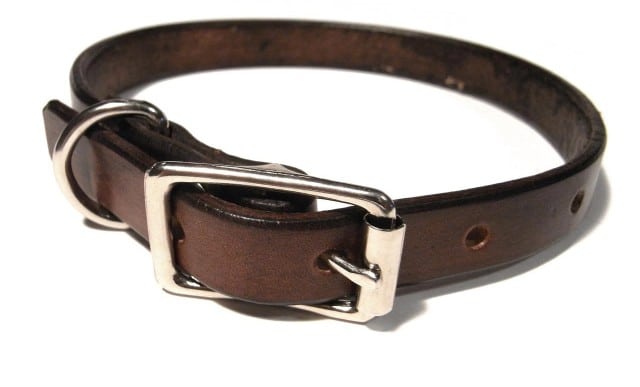

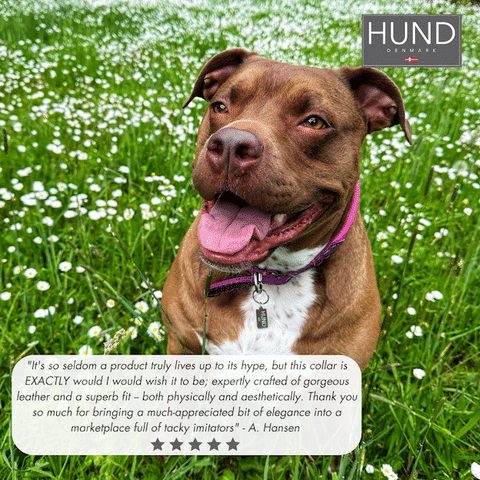


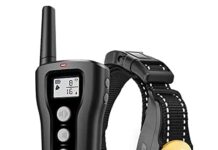
![Petrainer Dog Training Collar [100% Waterproof] Petrainer Dog Training Collar](https://mydogtrainingcollar.com/wp-content/uploads/2019/03/Petrainer-Dog-Training-Collar-218x150.jpg)

